Pantheon Paris – France’s National Mausoleum
The Pantheon Paris embodies the many changes that the nation has undergone during its illustrious history. Add to that the fact that many of the greatest Frenchmen and Frenchwomen are entombed here and you know why it is a must-visit site for the citizens of France. I’ve been staying in the Latin Quarter during my latest sojourn to Paris and today I’m on my way to visit the Pantheon Paris which is not far from the apartment in Rue St. Jacques. Why don’t you join me?
History of the Pantheon Paris
Pantheon is a Latin word that means ‘every God’ and is usually associated with the building of the same name in Rome. The original Pantheon was built by Hadrian between 118 and 125 A.D. and incredibly still stands today.
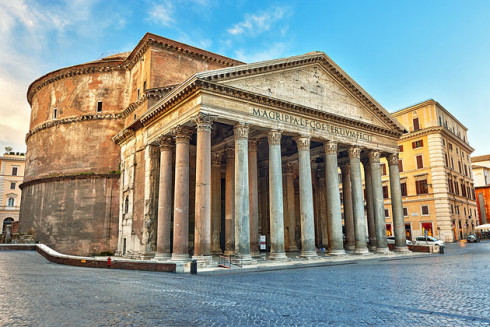
The Pantheon Paris of today is about 1650 years younger, but has a history that goes back almost to Roman times. Ste. Genevieve became the patron saint of Paris when she convinced Parisians not to flee the city as Attila and his Huns approached. Instead they prayed and Attila decided to ransack somewhere else. King Clovis built a basilica here in 507 and Ste. Genevieve was buried here in 512. Fast forward over a thousand years to the reign of Louis XV who became king at age five and ruled for sixty-four years, helping to precipitate the French Revolution along the way. When he became deathly ill in 1744 he prayed to Ste. Genevieve and pledged to build a church to her if he recovered. He did and he did.
Louis hired Jacques-Germain Soufflot to build a church that would rival St. Peter’s in Rome and presumably St. Paul’s in London that Christopher Wren completed in 1710. Both feature huge domes as does the Pantheon Paris. The neo-classical building was finished in 1790, but an important little incident had occurred the year before. The storming of the Bastille got the French Revolution off to a roaring start and the Catholic church was suddenly institution non grata. In 1791 the church became the National Pantheon and has remained so ever since with a few exceptions such as the funeral of Victor Hugo.
To say that the Pantheon Paris is imposing is like saying that the Empire State building is tall. Built on the crest of Ste. Genevieve hill it can be seen from miles around. This is the view approaching it up Rue Soufflot. Note that despite being a civic building it still has a cross atop the cupola.
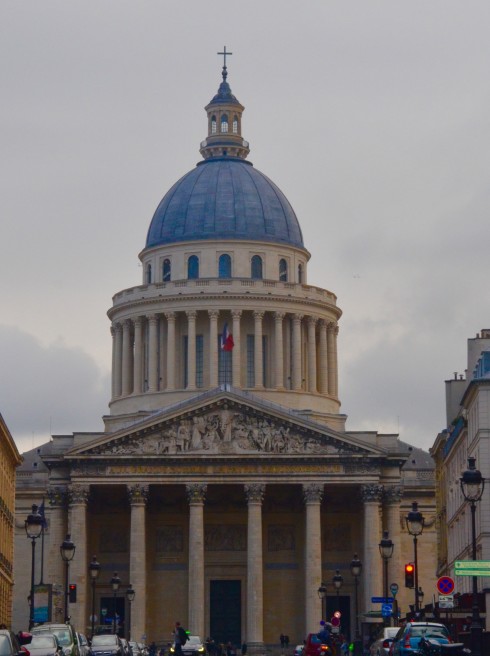
The resemblance to the original Pantheon begins and ends with the columned entrance and pediment.
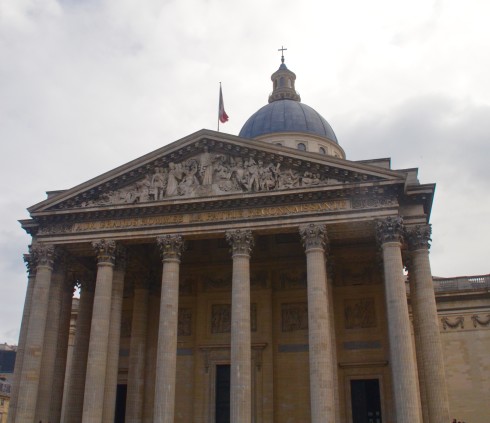
While the Rome Pantheon was dedicated to the great general Marcus Agrippa, the Pantheon Paris is dedicated to ‘Aux Grands Hommes La Patrie Reconnaisance”‘ which I would translate as ‘The Country Recognizes Our Great Men’. Apparently Voltaire and Rousseau are up there to the left.
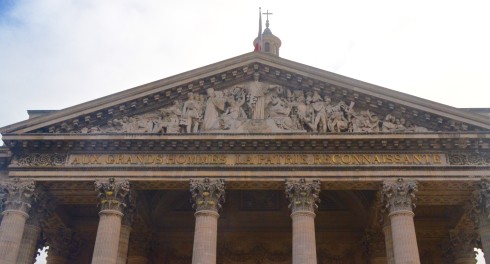
Just before entering I take a look back from the steps and see this great view of the Eiffel Tower.
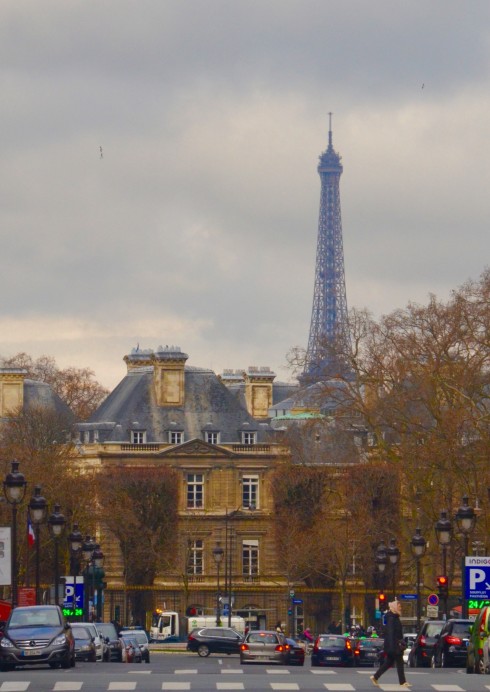
Visiting the Pantheon Paris
Admission to the Pantheon Paris is 11.50€ and the audio guide is another 4.5€. There are no restrictions on photography. There is also no lineup and the interior is so large that it looks virtually deserted even though there’s probably about another fifty or so people inside. The first thing you see is this rather arresting painting of St. Denis picking up his head.
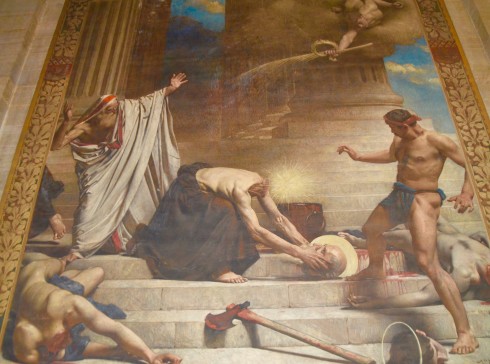
Last year I visited the spot in Montmartre where St. Denis was allegedly beheaded and then the basilica outside of Paris to where he supposedly carried his severed head. This graphic depiction certainly falls into the gruesome category that I’m sure has given more than one kid nightmares.
The interior of the Pantheon Paris is in the shape of a giant cross, although all sides are equal so it’s more like a giant + sign. Technically it’s called a Greek cross. It is definitely impressive, particularly looking up at the dome.
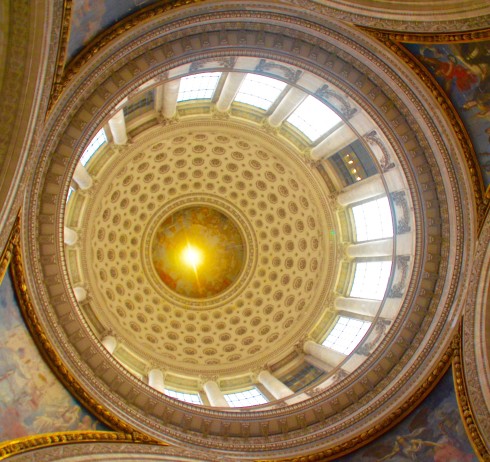
Directly below the dome is the original Foucault’s Pendulum which was used to demonstrate that the earth rotated. Don’t ask me how, but it’s still swinging.
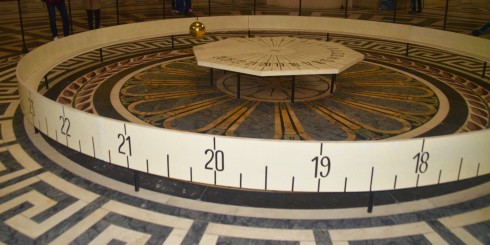
The interior is replete with huge paintings depicting scenes from legendary moments in French history and most of them are very good. The Life of Joan of Arc is depicted in four paintings by Jules Lenepveu. The first depicts Joan as a peasant girl who has a sword thrust into her hand by an angel.
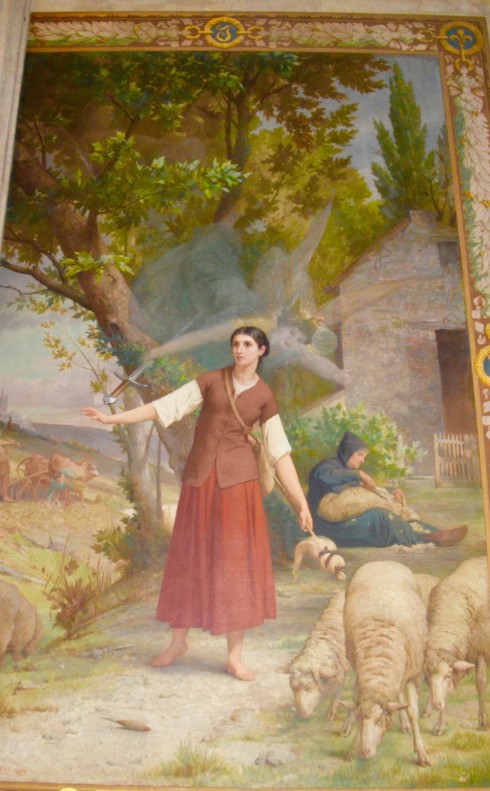
Next thing you know Joan is leading an army and lifting the British siege of Orleans, thus earning her other sobriquet, “The Maid of Orleans’.
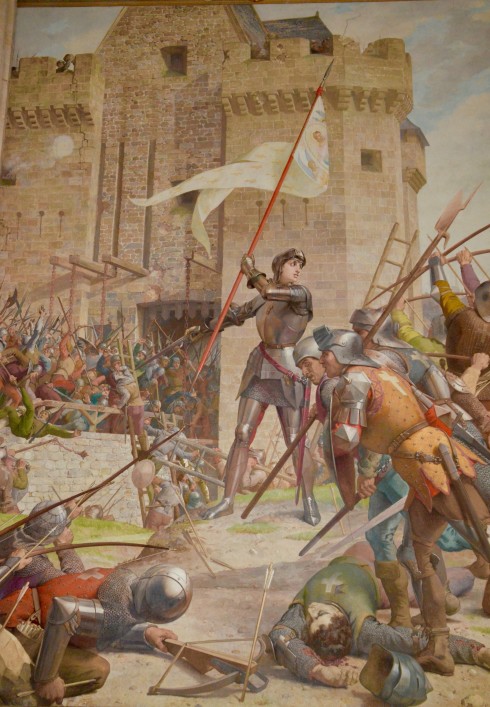
Then she gets Charles VII coronated at Rheims.
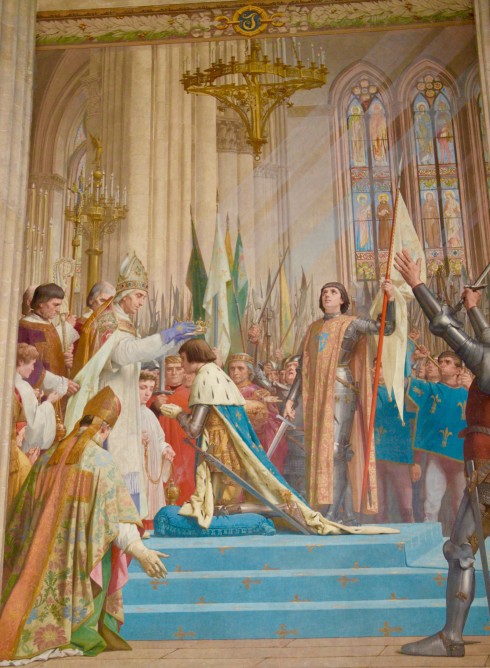
And we all know the bad ending as the British capture Joan and invite her to a roast. I’m not sure what role the priest is supposed to have played.
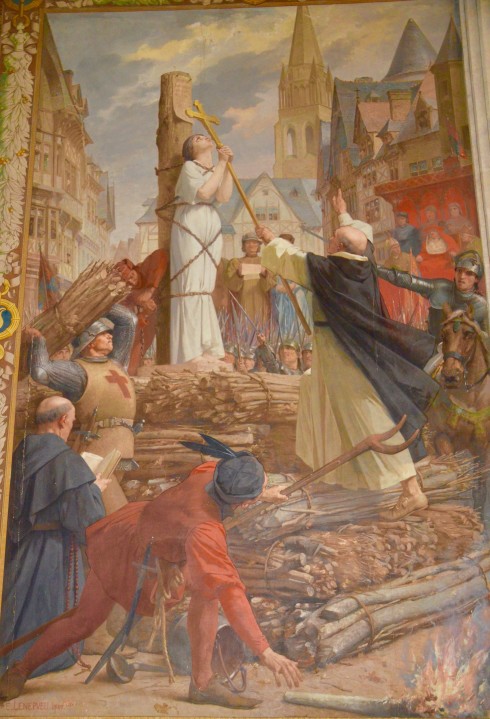
At the east end or choir, of the Pantheon Paris is dominated by a large mosaic overlooking the 1924 construction of the National Convention by Francoise-Leon Sicard.
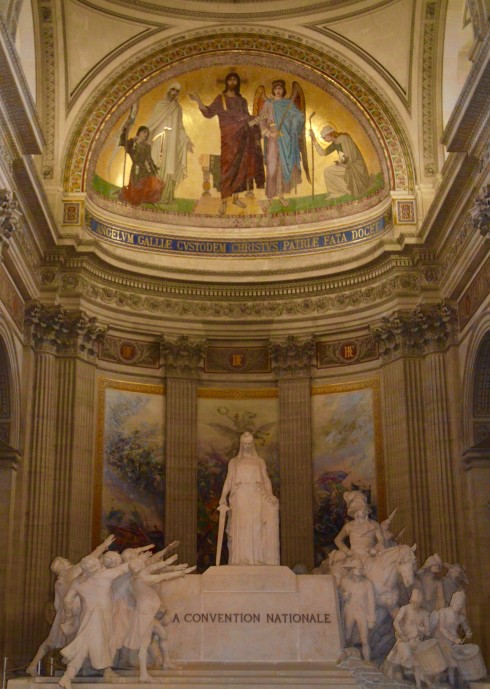
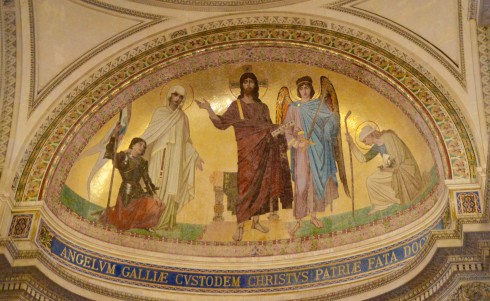
That’s Joan of Arc and Ste. Genevieve with Jesus and I presume Archangel Michael, but I can’t find any info on the third saint.
The National Convention was held from 1792-95 during the French Revolution and led to the establishment of the first French Republic. I can’t help but notice the resemblance to the Heil Hitler salute that these guys are giving to Marianne, one of the symbols of France.
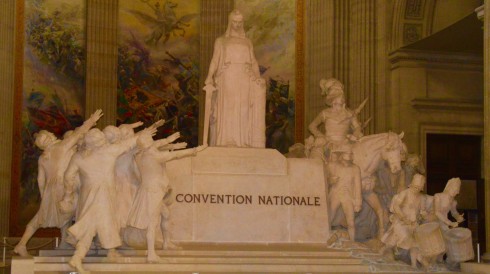
Continuing my circuit of the twelve walls that constitute the main floor of the Pantheon Paris I come to a series of paintings depicting the early Christian history of Paris. Some of these are very good including this Baptism of Clovis by Paul-Joseph Blanc, a specialist in historical and mythological painting. Clovis was the first king of the Franks from whence the country takes its name. He is interred at the basilica of St. Denis, outside of Paris – you know, the place where St. Denis dropped his head.
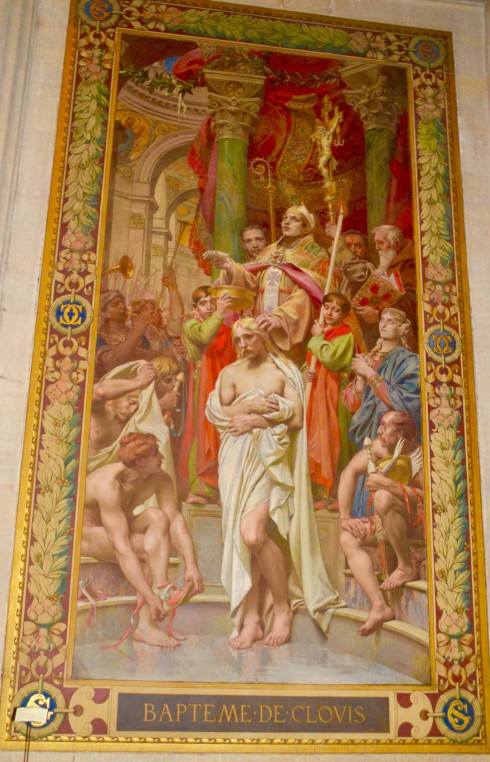
Puvis de Chavannes was a contemporary of and much admired by many of the Impressionists, but he painted in his own style that was especially adaptable to murals and other large subjects. He was commissioned to paint a series on the life of Ste. Genevieve for the Pantheon Paris and I think they are among the most striking paintings in the building. Here is the saint as a child. I have to wonder at what the black sheep in the foreground is meant to represent.
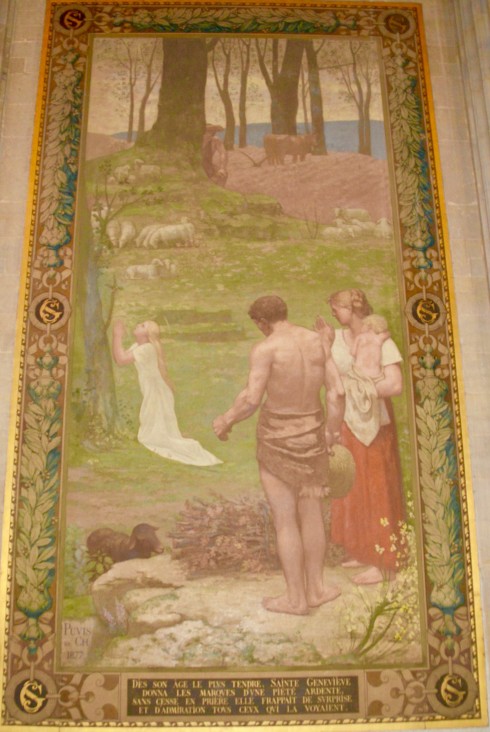
And here is the adult saint, patron of Paris and virgins. She was one of the first vegetarians which might explain why she was always having visions, no doubt brought on by light-headedness.
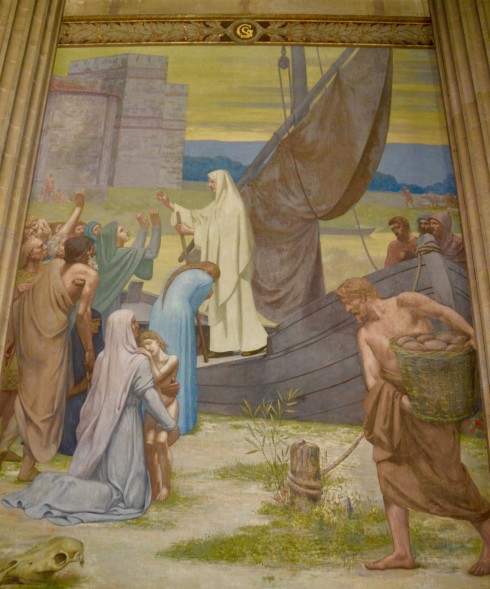
I’ve been here for an hour and had the time to view all of the paintings on the main floor in relative silence. The lack of other visitors is really kind of amazing given the importance of this place to the French identity. Now I’m about to descend the stairs behind the Convention Nationale to the crypt where some of the greatest French citizens are interred.
The Crypt
Only the week before I was in the crypt at St. Paul’s in London so I will be able to compare the two experiences. According to the audioguide the crypt in the Pantheon Paris is designed along the lines of the great Greek temple of Poseidon at Paestum just south of Naples. I’ve been to Paestum and am having a hard time trying to understand how an underground crypt could be based on an open air temple, but who am I to quibble about such minor details?
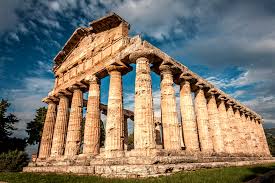
The first tomb I come across is that of the great enlightenment thinker Jean-Jacques Rousseau who was actually Swiss by birth. It’s made of wood and there’s a hand reaching out grasping what looks like a crozier to me.
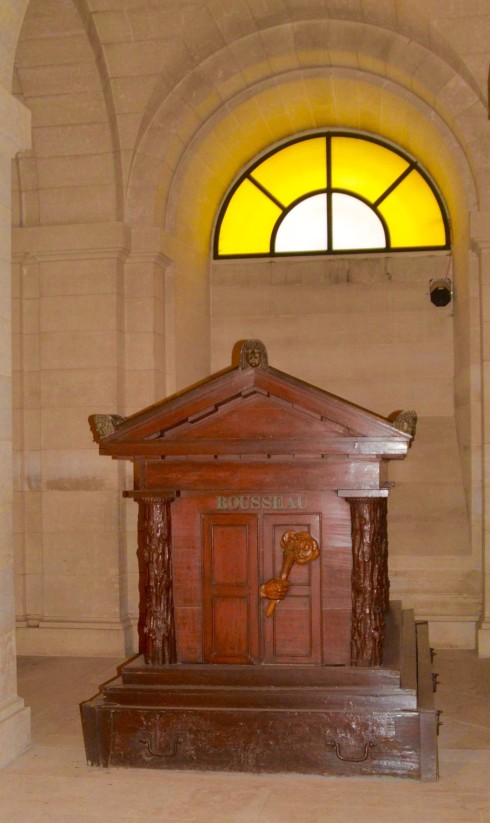
Across from Rousseau and staring at his tomb is the first person to be given the honour of a burial in the Pantheon Paris, Voltaire. This is rather ironic considering how many times he had to flee the country during his lifetime to avoid prosecution and possibly execution for his satiric criticisms of the royal family and the other dolts who ruled France before the revolution. The statue by Houdon is exceptional and very much in the Roman tradition.
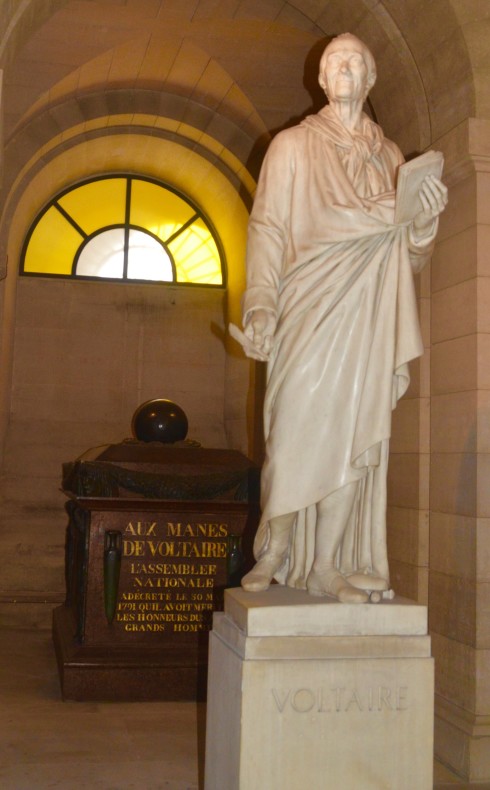
While Rousseau and Voltaire get their own niches, this is not the case with most of the people buried here who tend to be grouped together depending on their fields of endeavour. For example here are René Cassin who won the Nobel Peace Prize for drafting the Universal Declaration of Human Rights, Jean Monnett the father of the European Union, Jean Moulin the leader of the Resistance during WWII and André Malraux, novelist, politician and resistance fighter. All four would be considered very influential in determining the makeup of France as it exists today. They have identical tombs and please don’t ask me what the heck that statue of the Egyptian cat goddess Bastet is doing in there. Scaring away the mice maybe?
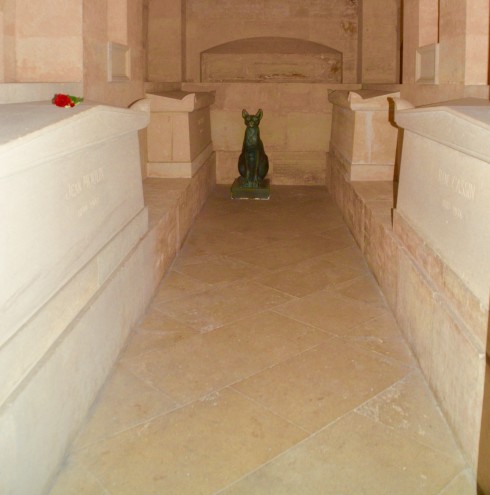
Here are Paul Curie and his much more celebrated wife Marie Curie who won two Nobel Prizes. She shared the first with her husband, in physics in 1903 and in 1911 on her own in chemistry, the only person to ever win in two different disciplines. Ultimately her work on radioactivity lead to her death from radiation related disease at age 66.

Three of France’s and the world’s for that matter, greatest writers lie together in one crypt. Here are Emile Zola, Victor Hugo and Alexandre Dumas (or Dumas père to distinguish him from his less illustrious son).
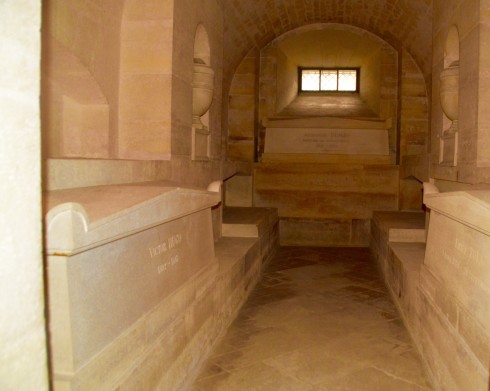
Zola was originally buried in Montmartre Cemetery where his grave marker is quite a bit more ostentatious than this one. I was there in 2015 and at the time thought I was seeing his real burial site.
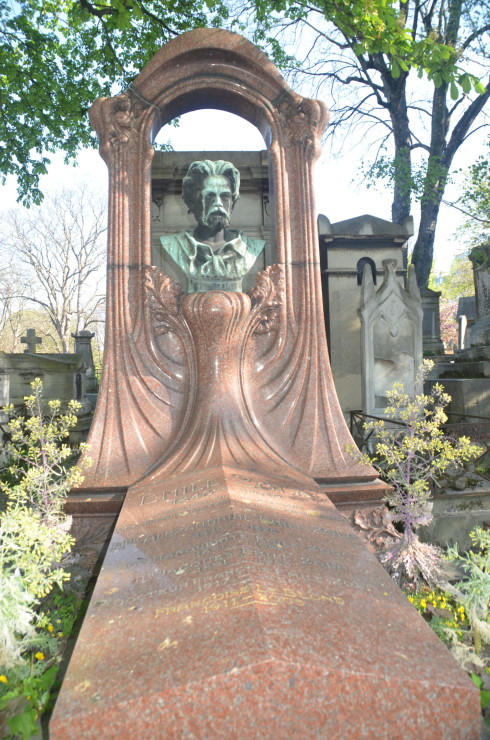
The mausoleum at Pantheon Paris is nowhere near as full as the one at St. Paul’s and is noticeable for the absence of military figures. Whereas St. Paul’s features Nelson, Wellington and a host of lesser lights from Britain’s martial past, Pantheon Paris honours more the men and women who have moulded the modern French way of life. The virtues of scientific thinking, philosophy, tolerance and equality are rewarded with places here, but not military victories. And before you wisecrack that that’s because the French didn’t have any, I’m going to Versailles tomorrow where there’s an entire room dedicated to French military victories.
One other thing I like about Pantheon Paris is that there are still plenty of empty spots for future French greats. Maybe there’s a bit of hubris in that, but I don’t really think so.
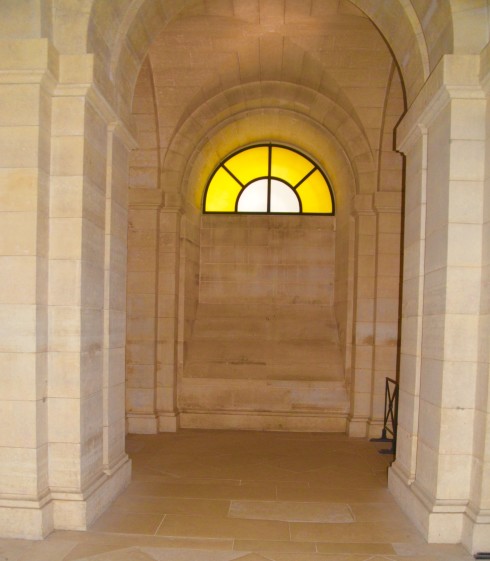
The one major disappointment today is that the outside viewing platform, often referred to as the ‘Balcony of Paris’ because of its spectacular views, is closed for restoration, but it reopens to the general public on June 1, 2016. Yet another reason to return to this great city.
One final photo. This is St. Etienne du Mont, a church right beside the Pantheon Paris that is very interesting in its own right.
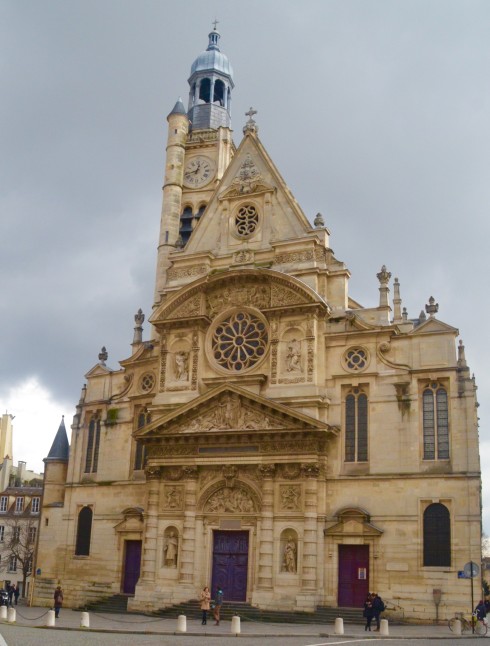
As you can see the architecture is quite unique as is the history. Originally Clovis was buried here in a predecessor abbey along with his wife Clothilde and Ste. Genevieve. It still holds the relics associated with Ste. Genevieve even though they were actually burnt during the French Revolution. I didn’t go inside because of lack of time, but have it on my future visit bucket list.
I hope you’ve enjoyed this tour of the Pantheon Paris and will join me tomorrow as Lenore and I head to Versailles. Later on our trip we’ll stop by the Orangerie, which is a great alternative to the always crowded Musee D’Orsay.

